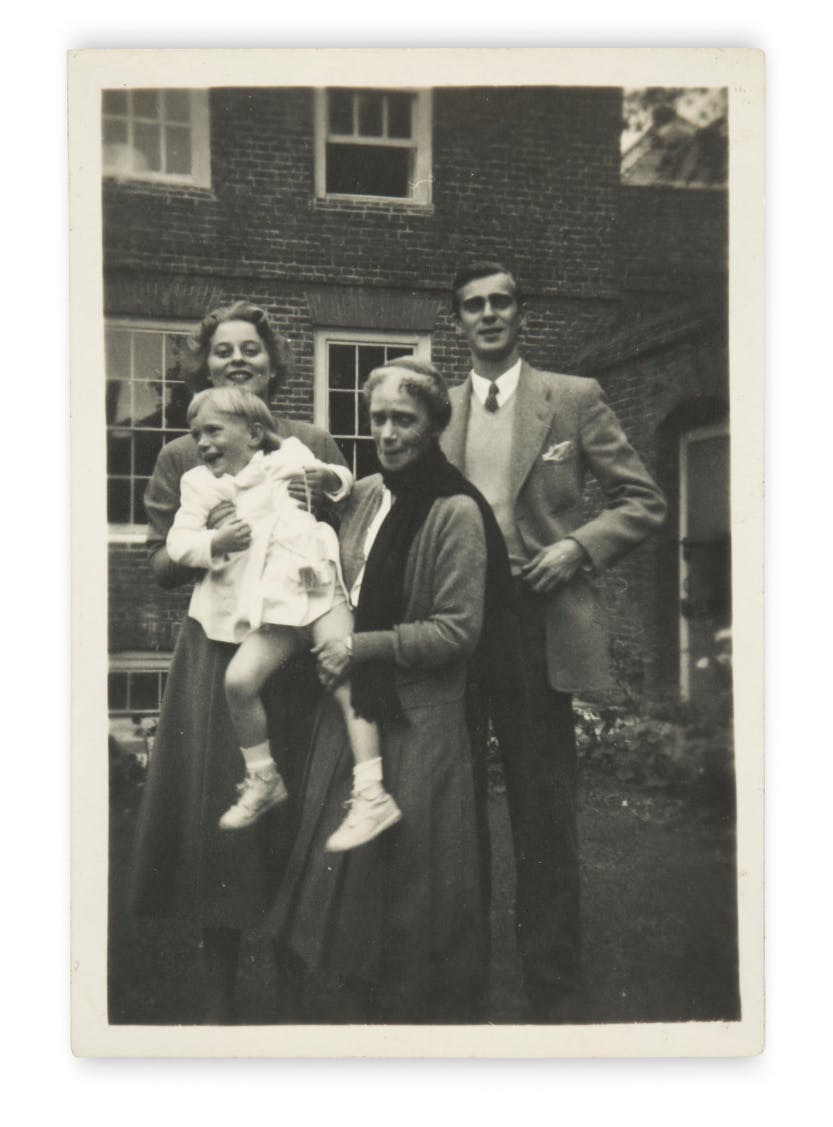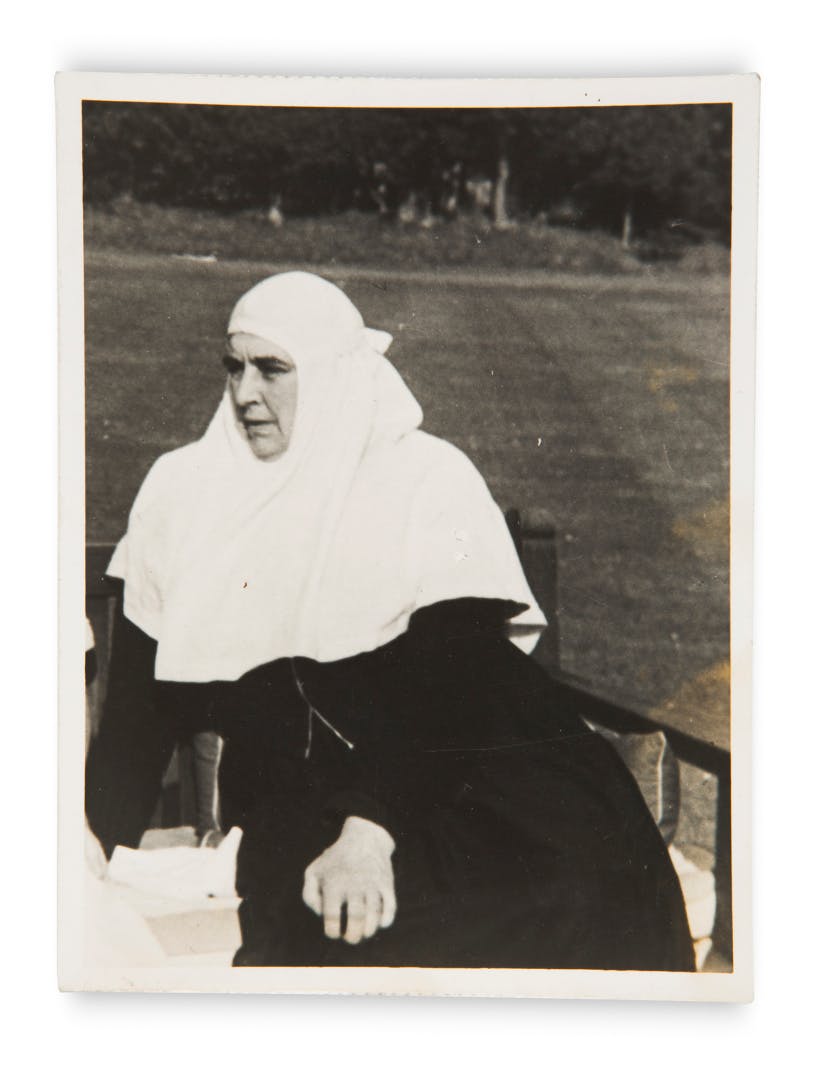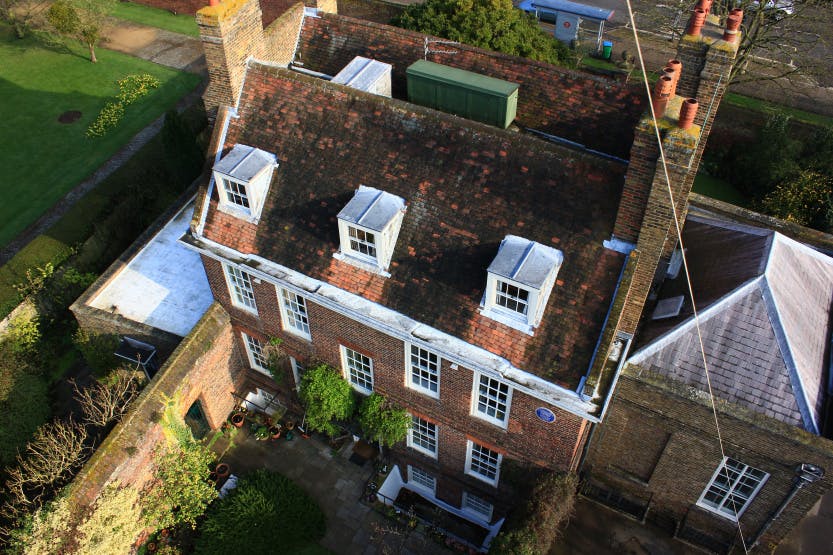Grand Duchess Xenia Romanov: A royal Russian resident at Hampton Court Palace
Date: 06 April 2017
Author:
Emily Spary
On 6 April 1917, in the midst of violence and unrest, Grand Duchess Xenia Romanov left St Petersburg on a train to the Crimea, never to return again. Xenia’s journey into exile which began on her 42nd birthday, 100 years ago today, eventually brought her to Hampton Court Palace.
Who was the Grand Duchess Xenia?
Here at Hampton Court, a century after the Russian Revolution, we have acquired some exciting additions to our collection that relate to Grand Duchess Xenia Alexandrovna Romanov. She was a leading member of the exiled Russian imperial family and, (perhaps less well-known), a former resident of the palace.
Xenia was the sister of the last Tsar, born into the immense splendour and wealth of the Russian court on 6 April 1875. Most of her childhood was spent outside the old imperial capital, St Petersburg, in the safety of the palace of Gatchina.

Image: Grand Duchess Xenia in 1925. Royal Collection Trust © HM Queen Elizabeth II 2017
The Russian Revolution
The assassination of her grandfather, Alexander II, in 1881 offered an early indication of the violence that was to come. In 1894, Xenia married her second cousin, Grand Duke Alexander Mikhailovich (1866-1933) at the Grand Palace in St Petersburg and they went on to have seven children together.
The Revolution in 1917 was a popular response to two decades of dissatisfaction with the ruling elite, heightened by the crippling effects of World War One. The first revolution resulted in the abdication and murder of the Tsar in March ending almost 300 years of Romanov rule. The second led to the success of the Bolsheviks in November and the establishment of socialist rule.
Moving to England
In early 1919 Xenia made her way to England aboard the HMS Malborough which was sent by her first cousin, King George V, to rescue the Romanovs. In England they lived in very modest circumstances before the King offered the Grand Duchess Frogmore Cottage at Windsor in 1925. This token helped Xenia’s financial situation; she had no independent income and had left most of her possessions behind in her haste to flee the revolution.
Upon the death of King George V in 1936, Xenia was advised that Frogmore Cottage was now intended to be used only by the immediate royal family. Thus the grace and favour lodgings of Wilderness House at Hampton Court became her home for many years.
Wilderness House was built around 1700 originally as a home for the royal gardener. One of the most famous former occupants was Lancelot ‘Capability’ Brown and his residence from 1764-1783 is celebrated by a blue plaque. Xenia was settled in by 1937 and the house quickly became a destination for family and friends, including Queen Mary.
Life at Wilderness House
Xenia may have left the extravagance of her previous life behind, but the social worlds of the court had followed her. Alongside members of her family, Xenia had a small household and a constant companion in Mother Martha, a Russian nun who moved to Wilderness House in 1938.
She was loyal and fiercely protective, but also a controversial figure remembered for her big feet and features which resembled 'the face of a powerful elderly man' (according to biographer, James Pope-Hennessy). When Xenia died Mother Martha disappeared without a trace, along with the inheritance left to her by the Grand Duchess.
One of Xenia’s visitors and a frequent correspondent, Elisabeth (Princess Andrew), sadly died at Wilderness House on 20 October 1940 when a bomb was dropped near the house and caused the windows to shatter. She had been suffering from cancer for some time, however died later that day as a result of her injuries.
Two of the newly acquired letters were sent from Xenia at Wilderness House to Princess Andrew before her visit, and reveal the Grand Duchess’ interest in her wider exiled family and the reduced circumstances they were facing. Following the bombing Xenia’s family were forced to leave London, taking up temporary residence at Craig Gowan House near Balmoral Castle in Scotland.
Xenia in the archives
After the war, life continued at Wilderness House and the photographs and letters now at Hampton Court give us our first glimpses into Xenia’s world. Her childhood love of painting continued throughout her life, with small sketches and watercolours accompanying many of her letters.
Letters from her son Nikita to her grandson Andrew provide an insight into days spent swimming and sunbathing in the grounds of the Palace, as well as his very ‘White Russian’ opinion on local society and post-war democracy:
'…what has happened to their cleanliness and order, they are just as if in a mist and once can see that ‘democracy has gone to their heads, this is what it gives to the uneducated boors!' (translation from Russian)
Remembering Xenia

Image: Xenia in the gardens of Wilderness House c.1950. © Historic Royal Palaces
Xenia was thought of fondly by the people she encountered at Hampton Court, captured in interviews for Hampton Court’s Memories Project. Neighbours remember being welcomed, playing with her grandchildren and receiving presents at Christmas.
Another recalled Xenia’s willingness to help with fundraising for Russians stranded in Britain after the Revolution, as she frequently patronised various fundraising events in her attempt to aid refugees. After all, she had been one herself in 1917.
Grand Duchess Xenia lived at Wilderness House for over two decades until she passed away on 20th April 1960. I suspect she did not imagine her journey in exile would lead her to Hampton Court Palace as she left St Petersburg 100 years ago.
We hope to uncover more of Xenia's fascinating life at the palace that is so wonderfully presented through her personal objects.
Emily Spary
Curatorial Intern
We are always interested to hear from people with stories or objects relating to our more recent residents of Hampton Court Palace. To find out more about the Memories Project, contact: curatorial.volunteers@hrp.org.uk.
More from our blog

The Wedding of Captain Scott and Kathleen Bruce at Hampton Court Palace
04 January 2024
Assistant Curator Minette Butler explores how Captain Scott's wedding to his beloved wife Kathleen Bruce at Hampton Court Palace intertwines with the aftermath of his ill-fated expedition to reach the South Pole.

Objects Unwrapped: Grace and Favour Residents
09 December 2015
When George III became king in 1760, he chose not to use Hampton Court Palace as a royal residence. So the palace was turned into a giant lodging house for Grace and Favour residents.

Sideron and Cupido: Two untold lives at Hampton Court Palace
20 October 2025
In 1795, two remarkable men arrived at Hampton Court Palace in the entourage of the Prince of Orange. Enslaved as children and given to the Prince as 'gifts', Sideron and Cupido now accompanied the Dutch Prince as he fled invasion.

Uncovering Edward VI's nursery at Hampton Court Palace
19 September 2025
Assistant Curator of Historic Buildings James Shemmonds traces the story of Edward’s rooms, from his father Henry VIII’s passion for athletic pursuits to the hasty creation of rooms fit for a future king.




